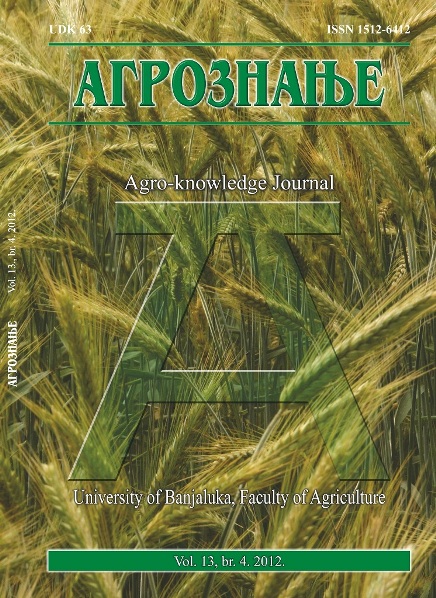Production of Bioenergy in the Posavina Region
DOI:
https://doi.org/10.7251/AGREN1204653VAbstract
This paper presents the results of the project titled "Agricultural Biomass Cross-border Development of Energy in Posavina” - ABCDE Posavina implemented within the IPA Cross-border Programme between Croatia and Bosnia and Herzegovina. Its main objective is to promote agro-bioenergy in rural economies by including utilisation of agricultural biomass for energy purposes in the Posavina region. The region includes Vukovar-Srijem County (VSC) in Croatia and four municipalities (Odžak, Domaljevac-Šamac, Orašje, Šamac) and Brčko District in Bosnia and Herzegovina (BiH). These areas represent valuable agricultural land with a good potential for economic utilisation. The analysis of agricultural biomass potential includes production of biogas in co-digestion of manure (cattle, pigs and poultry manure) and maize silage (input of maize silage is limited at 30% of feedstock mass) as well as biodiesel from oilseed rape and bioethanol from maize. Potential GHG savings are estimated for the biogas and biofuels use. Theoretical biogas energy potential is estimated at 1,386 TJ/yr for VSC and 574 TJ/yr for BiH. Based on the theoretical potential for generation of electricity and heat from biogas, total installed capacity in VSC would be 19.8 MWe while 8.2 MWe in BiH. The corresponding theoretical potentials for biodiesel production are 4,258 TJ/yr (VSC) and 1,415 (BiH) while for bioethanol these are 6,140 TJ/yr and 1,689 TJ/yr, respectively. It is assumed that 50% of total theoretical biogas potential and 30% of total theoretical biofuel potential are achievable. Annual GHG savings for biogas use are estimated at 31.30 ktCO2-eq (VSC) and 26.84 ktCO2-eq (BiH). Annual GHG savings due to biodiesel use are estimated at 37.46-64.22 ktCO2-eq (VSC) and 12.45-21.34 ktCO2-eq (BiH) and for bioethanol use at 54.02-92.61 ktCO2-eq (VSC) and 14.86-25.48 ktCO2-eq (BiH).Downloads
Published
2012-12-28
Issue
Section
Articles

